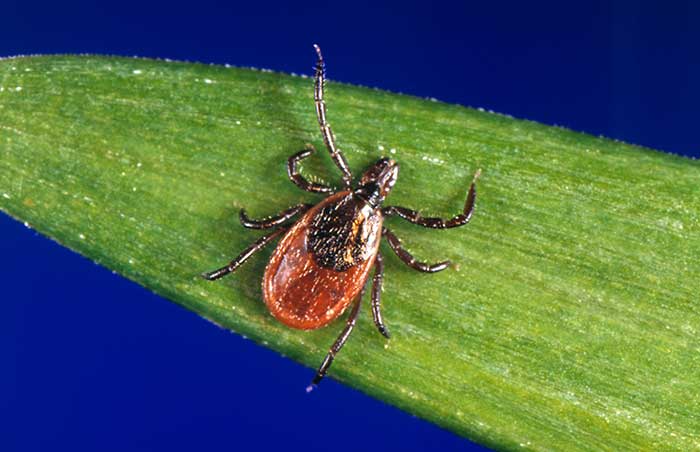Lethal, Tick Borne, Hemorrhagic Fever Virus May Find Treatment in mAbs - Genetic Engineering & Biotechnology News

As far as emerging, zoonotic, viruses go—Crimean-Congo Hemorrhagic Fever Virus (CCHFV) is one to watch. The disease, which is endemic in Africa, the Balkans, the Middle East, and some Asian countries, is considered a priority pathogen by the World Health Organization (WHO).
Crimean-Congo Hemorrhagic Fever (CCHF) is a life-threatening disease with up to a 40% mortality rate. Originally described in Crimea in the mid-40s, and decades later in the Congo, the virus has recently spread to Western Europe through ticks carried by migratory birds. The virus, as a biosafety level 4 pathogen, has no vaccine and no approved medical countermeasures.
Now, researchers have uncovered details about how therapeutically relevant human mAbs may be able to protect against CCHFV.
This research is published in Nature Communications in the paper, "Structural characterization of protective non-neutralizing antibodies targeting Crimean-Congo hemorrhagic fever virus."
It was previously described by scientists at the United States Army Medical Research Institute of Infectious Diseases (USAMRIID) that the non-neutralizing mAb 13G8—which targets the CCHFV glycoprotein GP38—protected mice from CCHFV when administered post-infection.
In the more recent study, researchers reveal the structures of GP38 bound with a human chimeric 13G8 mAb and a newly isolated CC5-17 mAb from a human survivor. These mAbs, the authors noted, "bind overlapping epitopes with a shifted angle."
"The USAMRIID study showed that the mouse mAb, 13G8, helps the immune system clear the infection," said Scott Pegan, PhD, professor of biomedical sciences at the University of California, Riverside, School of Medicine. "We knew 13G8 binds to a viral glycoprotein called GP38, but it wasn't clear where that binding took place. So we analyzed the structure to gain an understanding of how it works and pinpoint exactly where the binding occurs. This knowledge sheds light on the potential of these mAbs to be effective against a broad range of CCHF viral strains."
In addition to working with CCHFV, the broad-spectrum potential of the 13G8 and CC5-17 antibodies were examined. Specifically, the team tested whether it was useful to use them against Aigai virus—a closely related nairovirus. The binding studies they conducted demonstrated that the presence of non-conserved amino acids in the Aigai virus corresponding region prevents CCHFV mAbs from binding Aigai virus GP38.
Members of Pegan's research team were also able to obtain serum from patients who contracted CCHF in Turkey. The researchers isolated seven mAbs from a CCHFV survivor and identified two new antigenic sites on GP38. They then solved the structure of GP38 bound to one of the seven non-neutralizing human antibodies, in addition to 13G8. Knowledge of the structure of this complex can confer a clinical benefit as well, according to the authors.
"This structural information further characterizes GP38 as an antigen of interest for vaccination studies, while also advancing mAb development toward CCHFV," Aura R. Garrison, PhD, principal investigator at USAMRIID, said. "The therapeutic role for non-neutralizing antibodies in preventing disease is becoming more evident for high-risk pathogens such as Ebola, Lassa, and Nipah virus."
Pegan explained that CCHFV has a tri-segmented RNA genome, consisting of large, medium, and small segments. In 2006, GP38 was identified as a component of the medium fragment by the Special Pathogens Branch at the Centers for Disease Control and Prevention (CDC). The function of GP38 and its role in CCHFV infection remain unclear.
"We know that targeting GP38 stops CCHFV's progression, but no one is fully certain about how it works," Pegan said. "We would like to know more about its mechanism of action so that specific and effective therapeutics can be developed."


Comments
Post a Comment